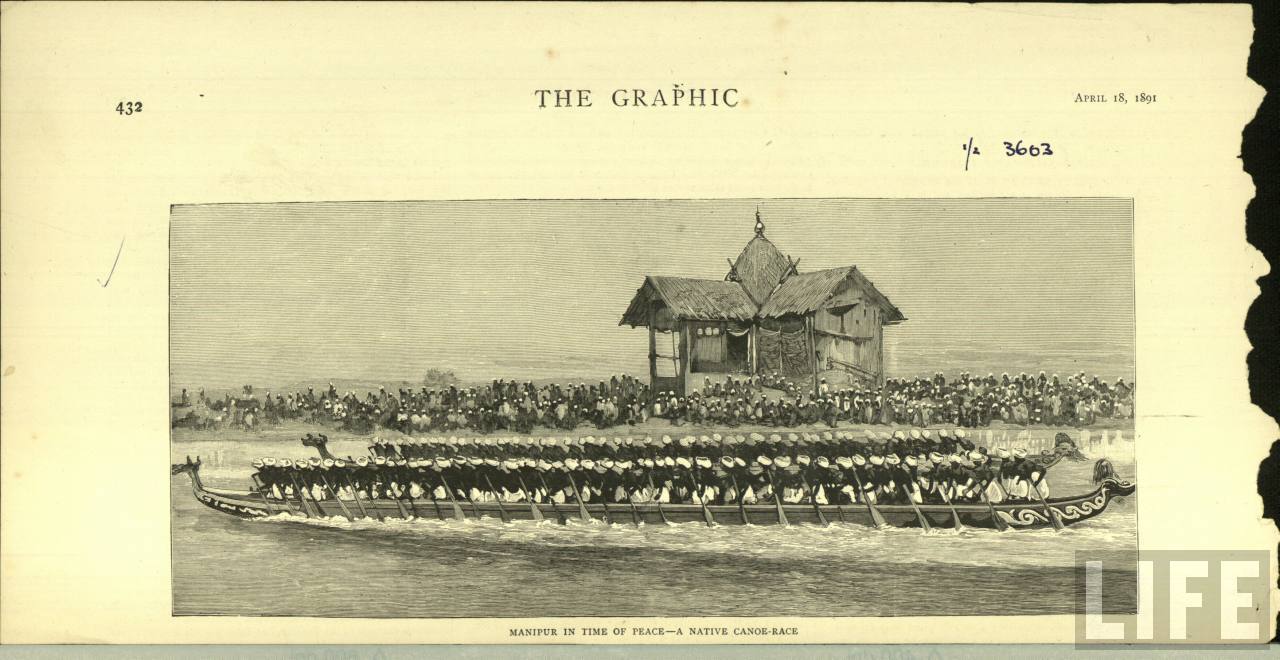India turned 75 as an independent modern nation on August 15. As every year, this was cause for celebration everywhere in the country, but there were also some contrary remembrances held in different corners including in the Northeast. As for instance, the Nagas raised their flag a day earlier claiming they had declared independence on this day. There is a history behind this, and whether this is tenable from the standpoint of the legality the transfer of power that the Indian Independence Act 1947 put into effect then, the fact is, at the time of independence, a good majority of the then Naga Hills of Assam did not want to be part of India, and this was reaffirmed by a plebiscite conducted in 1951 by the Naga National Council, NNC, under the leadership of A.Z. Phizo, in the then “administered areas” of these hills in which 99.9 percent of Nagas who cast their votes opted for a future outside of the Indian Union. Much has been already written and discussed about the Naga struggle and how the Naga sphere expanded in years thereafter to reach not only previously unadministered contiguous areas in what is now Nagaland, but also in time, neighbouring states, making the movement more powerful, but also more complicated. As scholars such as Jelle Wouters have written, the time may have already come for this expanding identity to begin showing signs of strain, and therefore also time for the Nagas to find a new paradigm for unity amongst themselves. Till today, the binding sinews of this collective identity has been what these scholars have called a “negative solidarity” or a unity that has a logic only in the face of a perceived common adversary, with the consequence that when these adversaries disappear or their adversarial profiles soften, the “negative solidarity” too begin to show signs of decay, and this is also loudly evidenced by the fact that the Naga underground movement has always seen the emergence of multiple factions on tribal identity lines every time a ceasefire agreements is entered with the government forces. The current extended spell of 24 year and running ceasefire is no exception, and the fragmentation of this moment is there for all to see. As to how this issue of unity unfolds and stabilises remains to be seen. For those of us in Manipur, this “negative solidarity” may not be a difficult notion to understand, for it is also witnessed to a great extent in the so-called hill-valley adversarial binary in the state.
In Manipur too there were expressions of stirred emotions and nostalgia of a sovereign past. There were also contentions this former Princely State’s sovereignty was restored immediately after the British relinquished power and liberated India from their colonial yoke. From the standpoint of the Indian Independence Act 1947 again, and the transfer of power to the newly independent India and Pakistan this resulted in, this contention was a fact. The British were legally authorised to transfer only territories they had annexed and therefore under their direct administrative jurisdiction at the time, but not those which they had kept under their control but not annex formally. Like other Princely States, in the Northeast region, Manipur’s and Tripura’s status were similarly placed, which is also why they did not automatically become part of the dominion of India (or Pakistan) at the time of independence. This was true of 560 or so other Princely States, and the stories of how the founding fathers of India brought them into the Indian Union, using means fair and foul, are well known today. It is also well known now Manipur and Tripura became a part of the Indian Union only in 1949, and in the case of Manipur, in rather unpleasant way, with its then king, Maharaja Bodhchandra being coerced into signing what has come to be known as the Merger Agreement after keeping him and his personal assistant under house arrest for three days at the Maharaja’s summer residence at Shillong. Long after Manipur thus became part of India, there were still more brought into the Union, and these include Goa and Sikkim, with Sikkim being the last to join India in 1975, again under controversial circumstances.
So much has happened since, and the important question that will spell the shape of the future of this place is, what now must be the of the approach of people by and large to this memory. For far too long has this answer been deliberately allowed to remain ambiguous, covered under layers after layers of subterfuge, and this probably is Manipur’s biggest bane today. It has bred generations of insincere politicians, intelligentsia and civil society leaders, who are wont to spit fire and brimstone at the establishment, wooing their followers to join them, and then when it suits them, forget whatever they have been saying and shamelessly join the ranks of those against whom they have been shamming bitterness. The conjured historical grievances thus have become handles for these political and intellectual leaders to garner for themselves the most advantageous positions in the establishment they vilify till so long as it serves their private ends. The rootlessness this has caused among the people must now end, and for once, there must have to be a definite answer to the question of which road to take to Manipur’s future. Let such a decision be not driven by a single point agenda for there are several ways to address and resolve memories of trauma from the past, and perhaps a good place to begin would be a consideration of these lines from American poet, T.S. Eliot, in his celebrated poem Four Quartets: “Time present and time past/ Are both perhaps present in time future/ And time future contained in time past./ If all time is eternally present/ All time is unredeemable.” In other words, we have no choice but to seek resolution to problems from the past for there are no ways to redeem that which have already happened.
It has been 73 years since Manipur became part of India, and on the edge of 50 years since Manipur was made a full-fledged state of the Union of India. The antiquity of the place’s history, of course go far beyond this, and in its long journey, understandably it went through good as well as bad times. In human terms, Manipur as a state would be in its late middle age and probably in mid-life existential crisis too, marked by many uncertainties and a paranoic sense of not having done enough thus far. If the time it became a part of India were to be also thus considered, it would be in its advanced mature years, therefore time to look back and oversee that the younger generations are educated on the mistakes of their generation. This is a time when ambitions and ideals of their spring years, the heartbreaks, disillusionments as well as achievements of the summer years, have all begun to give way to autumn, the ‘season of fruitful mellowness’, when resolutions begin to be sought through constructive and realistic compromises. It is a time to look back and assess the road left behind, never to be travelled again for time is a vehicle without a reverse gear, but to learn from the experience of it and then look to the road ahead the younger generations would be travelling. Indeed, the onset of these autumn years is also a time in anybody’s life when the next generation becomes more important than ever, therefore also the time to begin seeing the future not just from their interest but from those of their children and grandchildren. Is Manipur ready for such a self-introspection?
This search is essential and important even if many of its problems are inherited from past disruption of its historical march, and the tumults that resulted from it. In fact, even the culture of protest so pervasive in this state is also in many ways a conditioned response. A brief tour of the statehood history of Manipur will demonstrate this. In 1949 after Manipur merged into the Union of India, for reasons that would have been seen as hostile by those in Manipur, it was made a Part-C state, after dissolving its democratically elected Assembly. This probably was a result of what Fali Nariman says is a manifestation of an underlying fear of the Union, having just gone through the traumatic Partition, that it may further balkanize. It therefore needed to ensure that the Princely States it absorbed, especially rebellious ones, were made to feel subservient to the Union. Manipur’s wounded pride rebelled and when the rebellion got too intense for comfort, concessions were made and the Manipur was upgraded first to the status of a Union Territory in 1957 and then in progressive piecemeal reward, given a 30-seat Territorial Council in 1963. When even this was not enough to quell the people’s dissatisfactions, finally made a full-fledged state in 1972, but only all after intense public agitations. It was out of these agitations that the now more or less defunct, but once a ruling party, the Manipur People’s Party, MPP, was born. Along with Manipur, Tripura and Meghalaya too gained statehood at the same time. By then the psychological conditioning had happened, leading the place to believe no concession would ever come without violent agitations preceding them. This legacy has lived on to make life in Manipur miserable, with bandhs and blockades being called at the drop of a hat by any and everybody. The question is, would this psychology have been any different if Manipur had been given full Statehood in 1949 itself?
Whatever the answer, Manipur must get over the scourge of this protest culture and get on to living life normally and healthily. This will not be easy, but it is almost a survival need for it to accomplish. What Manipur is going through would fall into what trauma writers such as Saul Friedlander have said is a condition called ‘fidelity to trauma’. This makes the victim remain literally faithful to the memories of traumatic events of the past, in the belief that the present is solely a by-product of the past. The victim therefore begins to perpetuate his victimhood, harming himself and his prospects for the future. Friedlander and others have a suggestion which Manipur can learn from. The victim must work through this condition, and without betraying the past, dissociate its present and therefore future from the past. In Freud’s famous essay, ‘Mourning and Melancholia’, this would be ‘mourning’. This is quite unlike ‘melancholia’ where the dead past and the living present become trapped in the same time frame with the present left to bear the burden. The recommendation is, we mourn and not be trapped in melancholia. There must hence come a time to say farewell to the dead so the living can live on. Our history cannot and must not be forgotten but attempts to continue to live there is a fallacy that can only stymie the present. As in any mourning of a lost loved one, the approach must be “we love you and we will never forget you, but you are dead and we are living, and therefore we have to move on.” Moreover, the present is not just a legacy of the past, but also an autonomous creative era entitled to live its own present and forge its own future.












